Concomitant placement of dialysis and infusion catheters in the right internal jugular vein

“This study examined the safety and efficacy of placing both a central venous dialysis catheter and a central venous catheter for infusion in the right internal jugular vein compared to only a central venous dialysis catheter” Spitzer et al (2020).
Prognostic factors for PICC associated upper extremity DVT

“The precise incidence and risk of PICC-related venous thrombosis is important to be verified in the context of growing PICC use and an understanding of the risk of venous thrombosis is an important cost and patient safety question” Gao et al (2020).
Pneumomastia as a complication of peripheral intravenous line placement – Full Text

“On exclusion of other possible causes for the same, it was concluded that the air in the breast tissue was secondary to a peripheral intravenous line placement” Paulraj et al (2020).
Hybrid model of ultrasound-guided peripheral venous access

“Apheresis treatments require adequate venous access using peripheral intravenous (PIV) catheterization or central venous catheters (CVC)” Barth et al (2020).
Role of education linked to vascular access device standard of care

“The variability in nurses’ knowledge around both CVAD and PIV led the authors to conclude that there is room for improvement in the educational preparation of nurses and a need for workplace training” Raynak et al (2020).
PICC use in technology-dependent children – Full Text

“In this review, commonly prescribed home-based medical technologies such as home ventilation, enteral nutrition, renal replacement therapy, and peripherally inserted central catheter, which are useful for quick revision, are described” Gulla et al (2020).
The vascular access role of surgeons during the COVID-19 pandemic

“New skills sets were acquired such as PICC line placement and complex ventilator management” Wady et al (2020).
Drug stability and continuous-infusion in the outpatient setting

“The use of continuous-infusion in outpatient setting could be widely used in oncology and haematology care. Many times the lack of data stability about single drug or admixture of drugs, together with patient education and safety, make difficult the transition from inpatient to outpatient setting” Perego et al (2020).
Parenteral nutrition associated metabolic complications are more frequent in elderly patients

“Older hospitalized patients are more likely to develop a metabolic complication during their PN course than younger patients” Solomon et al (2020).
How efficient are air elimination filters used in IV infusion systems?

“With increasing recognition, various preventive measures have emerged, the most important of which is the use of air-eliminating filters” Lee and Bulsara (2020).
Clinical relevance of Poiseuille’s law in vascular access and infusion therapy

“Catheter and tubing choice, adjuncts, and fluid viscosity influence flow rates. Our results will help inform adequate vascular access planning in the perioperative environment” Berman et al (2020).
Compartment syndrome of the hand induced by peripherally extravasated phenylephrine

“We present the case of a patient diagnosed with compartment syndrome of the hand secondary to phenylephrine extravasation in the setting of hypovolemic shock” Fisher and Jarrett (2020).
Federal value-based incentive programs and CLABSI rates – Full Text

“In the US, federal value-based incentive programs are more likely to penalize safety-net institutions than non-safety-net institutions” Hsu et al (2020).
Anaphylactic reactions to biological drugs
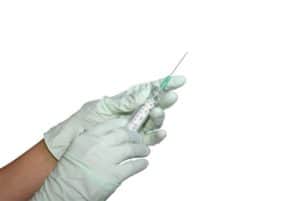
“This review summarizes the current knowledge of the pathogenic mechanisms of biologics-induced anaphylaxis, and the diagnostic and prophylactic strategies in the management of potentially reactive patients, to improve the safety profile of biologics” Matucci et al (2020).
Examples of alternative exit sites for central venous access devices

“The following two case reports demonstrate the technique for tunneling a femorally inserted central catheter downward to the patellar region and for tunneling a centrally inserted central catheter to the scapular region” Ostroff and Pittiruti (2020).
Smiths Medical partners with U.S. government on COVID-19 vaccine efforts – Full Text
“Smiths Medical has received an order through our authorized distributor Marathon Medical’s BARDA IDIQ agreement for 78.6 million syringe and needle units’ Smiths Medical (2020).
Antibiotic-loaded sol-gel prevents CLABSI – Full Text

“The aim of this study was to evaluate the effectiveness of a moxifloxacin-loaded organic-inorganic sol-gel (A50) by locally preventing the catheter-related bloodstream infection (CRBSI)” Aguilera-Correa et al (2020).
Compartment infection secondary to needlestick injury
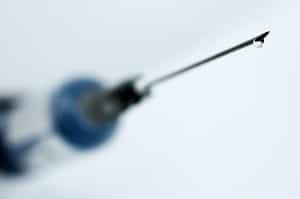
“This case describes a 69-year-old farmer who accidentally injected his forearm while vaccinating cattle, resulting in a flexor compartment infection” Reasoner et al (2020).
Implementing an epicutaneo-caval catheter team in the NICU

“A dedicated epicutaneo-caval catheter team is a promising intervention to increase success rates and significantly decrease catheter-related complications in Neonatal Intensive Care Unit” Bayoumi et al (2020).
Axillary vein catheterization under ultrasound guidance – Full Text

“The present study aimed at comparing the success rate and safety of proximal versus distal approach for ultrasound (US)-guided axillary vein catheterization” Su et al (2020).
Tumour seeding from an intraperitoneal chemotherapy access port – Full Text

“The authors describe a case of cutaneous port-site recurrence secondary to tumour seeding from an intraperitoneal chemotherapy access port” Chu et al (2020).
Ultrasound-guided VA is the most common type of point-of-care ultrasound
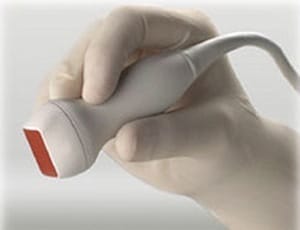
“Ultrasound-guided vascular access was the most common point-of-care ultrasound indication, except in PICUs providing joint care for neonates and children” Humblet et al (2020).
Ultrasound-guided double central venous catheter for azygos vein access
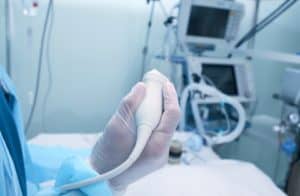
“We found that ultrasound-guided percutaneous puncture method was a safe and minimally invasive approach and successfully placed two central venous lines” Yoshimaru et al (2020).
Prevention of post-catheter removal clinical sepsis in neonates

“Administration of one-time doses of vancomycin and cefazolin did not reduce the incidence of PCRCS when administered to critically ill neonates prior to umbilical venous catheter or peripherally inserted central catheter removal” Teibel et al (2020).
Central venous catheter surveillance and electronic patient reporting tool

“This quality improvement project formalized central venous catheter tip surveillance augmented by the use of electronic patient reporting tool” Ulloa et al (2020).
Use of ultrasound guidance in central venous catheter placement in the ED – Full Text

“To determine the ultrasound guidance for central venous catheter (USG-CVC) placement rate of emergency physicians (EPs) in Kingdom of Saudi Arabia” Al Aseri et al (2020).
Care of hospitalized adolescents undergoing glucocorticoid infusion

“The aim of this study was to assess the knowledge of nursing teams that care for hospitalized adolescents undergoing glucocorticoid infusion” Peres et al (2020)
Skin antisepsis protocols to prevent bacterial skin recolonization

“To compare antisepsis and skin protection protocols on quantitative analysis of recolonization in the operating room at regular time-steps” Louis et al (2020).
Guidelines for cord blood unit thaw and infusion – Full Text

“Standard operating procedures (SOPs) for receipt and thaw of cord blood units (CBUs) as well as guidelines for graft infusion are a critical component of cord blood (CB) transplantation” Scaradavou et al (2020).
Hemodialysis catheter blood cultures for the early detection of CLABSI
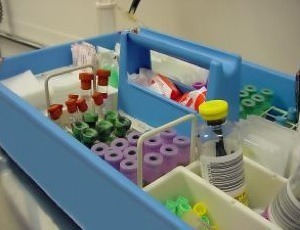
“Early detection of catheter-related bloodstrean infection (CRBSI) may decrease morbidity and mortality, but the benefits of systematic blood cultures have not been demonstrated” Roger et al (2020).

